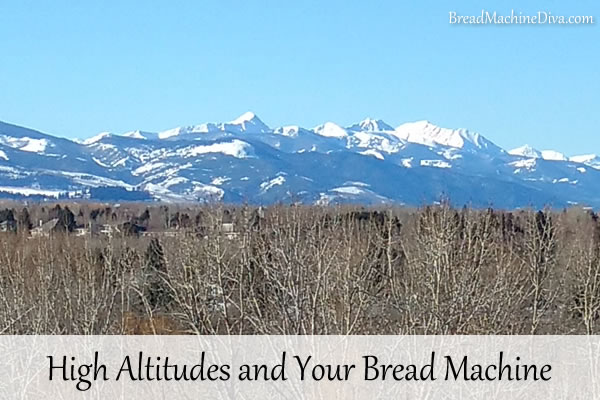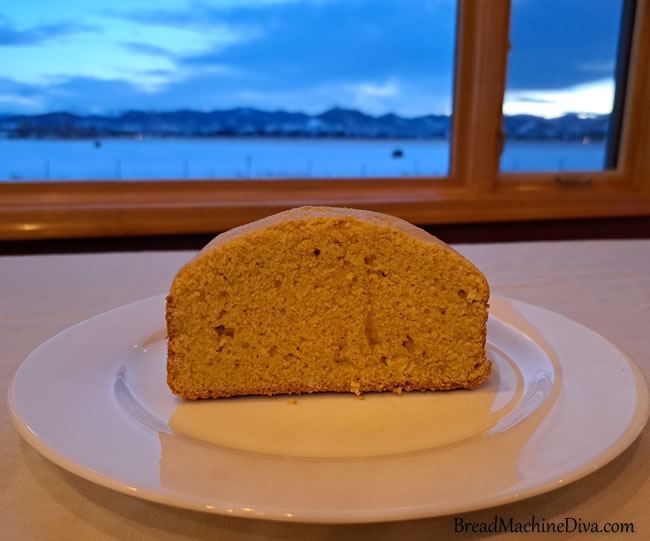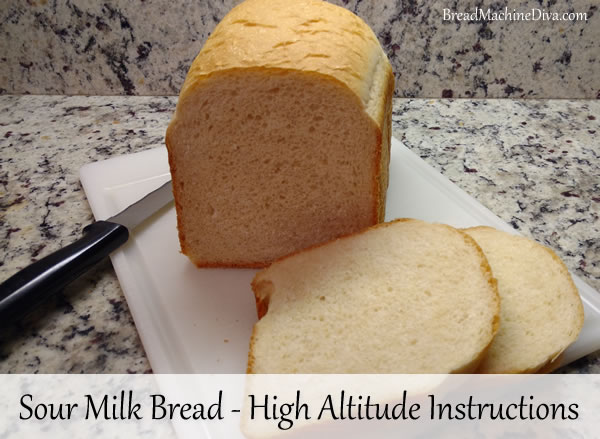High Altitudes and Your Bread Machine
Wondering about high altitudes and your bread machine? I get it! Over the last few years I’ve lived at sea level, 4,800 feet and at 3,700 feet. Here are some hints for adjusting bread machine recipes so that they work, no matter the altitude.

Last Updated February 16, 2024 – Originally Published July 17, 2017
The recipes on this site were developed when I lived along the Pacific coast. In other words, the recipes were developed at sea level.
However, in 2022 I moved back to the mountains where I grew up. For a time, I rented a place that was at 4,800 feet. Then I bought a home at 3,700 feet. Let me tell you, the altitude makes a difference in using the bread machine!
Table of Contents
What Altitude Affects Yeast Bread?
In my experience, bread recipes will work without adjustments until at least 3,700 feet. At 4,800 feet I needed to make changes.
This differs from what the experts say. They recommend that at elevations of 3,000 feet or more you’ll need to adjust your bread recipes for higher altitudes.
My advice is that if you live at 4,000 feet or below, at least consider trying a yeast bread recipe as written.
Why Higher Altitudes Affect Baking
At higher altitudes the air pressure is lower. That makes the dough rise faster. It also means that moisture evaporates more quickly. That can translate into dry or misshapen loaves of bread.
The Colorado State University Extension website points out that this shortened rise time can even affect the flavor of your bread.
Hints for High Altitudes and Your Bread Machine
As with any adjustments to a recipe, make small changes and document it. View the results and make more adjustments as needed.
Here are the adjustments I made for two-pound loaves of bread. If your bread machine makes one-pound loaves, then cut these adjustments in half.
- Decrease yeast – at 4,800 feet I used about 25% less yeast that I did at sea level
- Increase liquid by 1 to 2 Tablespoons
- Decrease sweetener by 1/2 teaspoon
- Increase the salt slightly
- If the recipe calls for the medium crust setting, try the light crust setting
- Try using flour that has a higher protein count. Another way to tackle this issue is to use vital wheat gluten.
- ALWAYS check the dough after five or ten minutes of kneading. It should be a smooth, round, ball of dough. Make corrections as needed.
Be Aware of the Humidity
When I moved to the mountains the altitude wasn’t the only thing that changed. I’m now in an environment with much lower humidity.
Humidity affects baking because flour can absorb humidity from the air. If you’re using the dough cycle of the machine, this can lead to soft, sticky dough. If you’re making a loaf of bread in your bread machine this can lead to a loaf with a sunken top.
The fix for high humidity is to lower the liquid in the recipe. The fix for low humidity is to Increase the liquid in the recipe.
What About at Quick Bread at High Altitudes?

Cornbread at 3,700 Feet
Yeast bread recipes need to be adjusted for altitude starting at 3,000 feet. But what about quick breads that use baking powder as a leavening agent?
I researched the matter and didn’t get any clear answers. So I tried my bread machine cornbread recipe to see what would happen.
The recipe works fine at 3,700 feet with no adjustments.
If your quick bread recipe doesn’t work at high altitudes, try decreasing the baking powder by 20% if you live above 3,500 feet, by 50% above 5,000 feet, and by 75% above 6,500 feet.
No Universal Adjustment
One thing that makes this whole situation challenging is that there’s not a one-size-fits-all adjustment for high altitudes.
Is your humidity high or low? Are you at 4,000 feet or 6,000 feet? The adjustment for each situation can be a little different.
Success Story – High Altitude Sour Milk Bread Recipe
I made this lovely loaf of sour milk bread at about 4,800 feet. I’ve added the high altitude instructions to the recipe.



